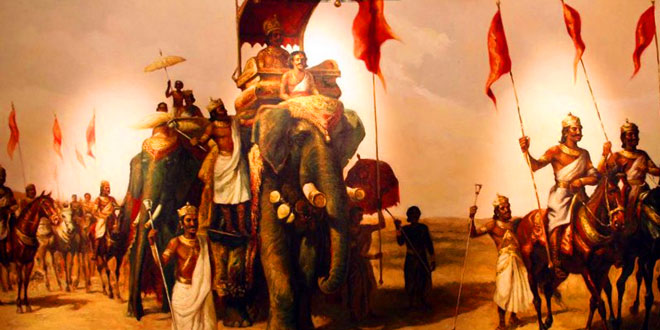Question: What were the different roles of different persons in the sacrifice?
Answer: The ‘raja’ was the central person in the sacrifice. He was given a special seat, like a throne. His charioteer would tell others tales of the ‘rajas’ exploits. His wives and sons would perform several minor rituals. Other ‘rajas’ would sit and watch. Priests sprinkled sacred water on the king. Ordinary people brought gifts.
Question: What is known about the ‘janapadas’ and their people?
Answer: Archaeologists have excavated a number of settlements in ‘janapadas’. They have found that people lived in huts. The people kept cattle as well as other animals. They grew a variety of crops like rice, wheat, barley, pulses, etc. They made earthen pots, some of which were grey in colour and some red.
Question: Write a short note on the governance system in ‘ganas’ or ‘sanghas’?
Answer: In ‘ganas’ or ‘sanghas’, these were not one but many rulers. Even if there were several men together, each was called a ‘raja’. They performed rituals together. They met in assemblies and took decisions. Women, ‘dasas’ and ‘kammakaras’ were not allowed to participate in these assemblies.
Question: What was an important features of capital cities of ‘mahajanapadas’? Why were they fortified? How were they fortified?
Answer: Capital cities of ‘mahajanapadas’ were mostly fortified by building huge walls of wood, brick or stone around them. There were various reasons for building forts. They were probably built because people were afraid of attacks from other kings and needed protection. Some rulers probably built forts to make their cities impressive and to show how rich and powerful they were. Moreover, by making forts, controlling the fortified area became easier for the kings.
Buildings forts required a great-deal of planning. Hundreds of thousands of brick or stone had to be prepared. Enormous amount of labour and resources were required.
Question: What changes took place in agriculture around this time?
Answer: There were two significant changes in agriculture around this time:
- Growing use of the iron ploughshares helped in yielding a better grain produce. Heavy, clayey soil could be turned over better with an iron ploughshare than with a wooden ploughshare.
- People began transplanting paddy. This meant that instead of scattering seed on the ground, from which plants would sprout, saplings were grown and then planted in the fields. Production developed due to this since many plants survived.
Question: Bimbisara laid the foundations of a strong empire in Magadh. Do you agree with this statement? Give reasons.
Answer: Yes, we agree with the statement that Bimbisara laid the foundations of strong empire in Magadh as:
- Bimbisara was very ambitious and efficient ruler. He ruled for 52 years from about 544 BCE to 492 BCE.
- Bhimbisara followed a policy of expansion and conquered Anga with its important port, Champa.
- He entered into marriage alliances with ruling families such as the princesses of Kosala, Vaishali, Madras etc and maintained friendly relations with his neighbors.
- He took lot of interest in administration and governed his kingdom well.
- He Travelled far and wide in his kingdom to keep himself informed. He also built good roads and encouraged trade.
 Class Notes NCERT Solutions for CBSE Students
Class Notes NCERT Solutions for CBSE Students


